String of pearls is a popular senecio variety that people like to add to their succulent collection. They really do look like a string of pearls, or, as my friend, John Gulley saw them, a string of English peas. Sometimes called string of beads, all these names fit this unusual plant.
The round leaves- and the pearls are the leaves of this plant- have adapted to their native arid southwestern Africa environment by developing a slim translucent strip of tissue on the pearl known as a “window” that allows light to enter and irradiate the interior of the leaf, which increases the area of leaf tissue used for photosynthesis. This aids the plant in photosynthetic carbon assimilation. More information than you wanted to know, right? But what a sophisticated adaptation for this little plant to survive in harsh growing conditions as a means of better use of water and growing conditions. This, of course, is a simplified version of the scientific process, but I hope it gives you a basic understanding of how the plant makes the most of bad conditions. Look closely at the pictures below and you will see narrow slits on some of the pearls; these are the windows.
In the wild, his little plant tends to grow in the shade of other plants and rocks, and I don’t put mine in full strong sun, either. Like most cacti and succulents, it doesn’t like to sit in soggy soil, but it has been my experience that it does like a bit more water than other succulents. I water at least once a week in the winter and more often in the hot summer. If you discover you have a string of raisins rather than round plump pearls, you need to water more! The leaves that have already shriveled up probably won’t plump back up, but more frequent watering should keep you from losing the plant. Trim off the strings of winkled pearls, water a bit more, and be patient.
String of pearls tend to bloom in the fall and winter here, an interesting little flower that is said to carry the scent of cinnamon, but I have not noticed it around my plant.
The tissue of the plant is somewhat poisonous, so be aware when working with it. You could experience vomiting and diarrhea and some skin irritation if it comes in contact with your skin, but I would think you would have to ingest a large amount of it for those reactions. I have never had an adverse reaction when rooting cuttings. As always, I don’t tell you this to scare you away from the plant, but to prepare you for possible issues.
Senecio rowleyanus is rarely sold in the big box stores, but you will find it every now and then, so be on the look-out if you are interested. It can also be ordered off the Internet and found in cacti/succulent specialty nurseries. Or you could always come by my house for a cutting. It is a fun plant to have in your collection.
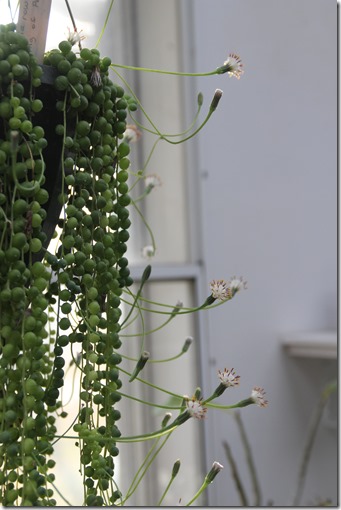
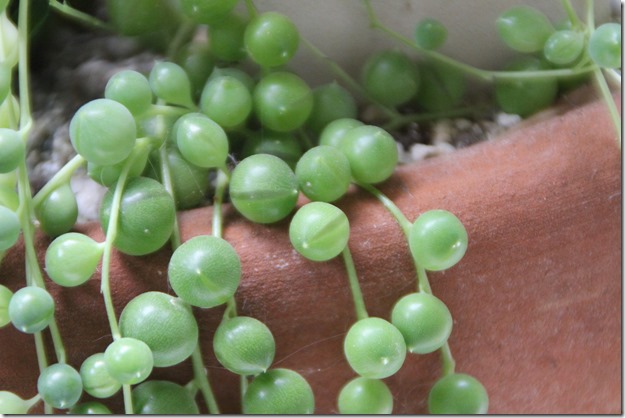
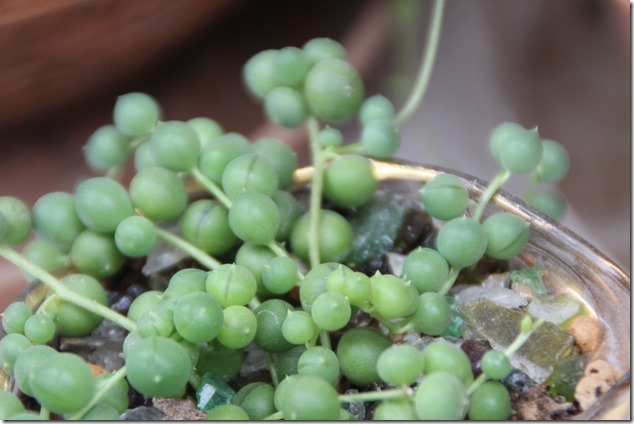
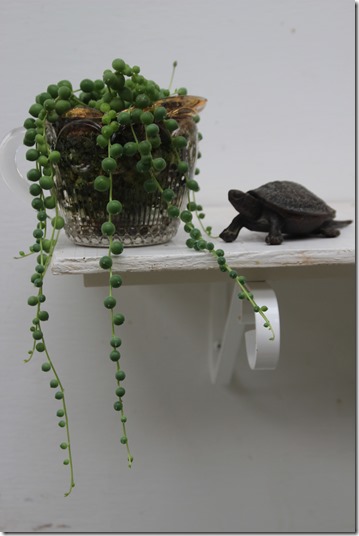
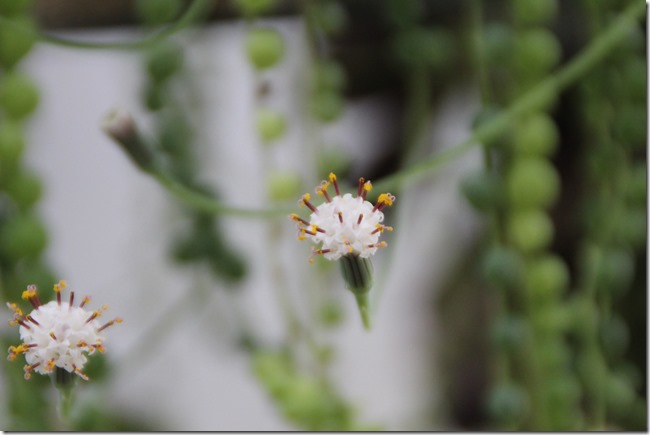
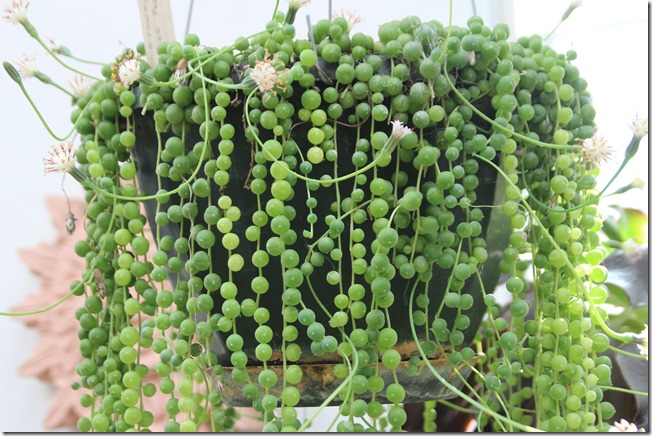
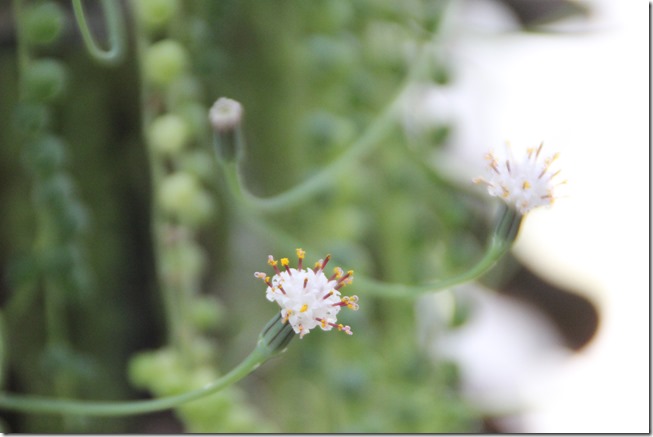
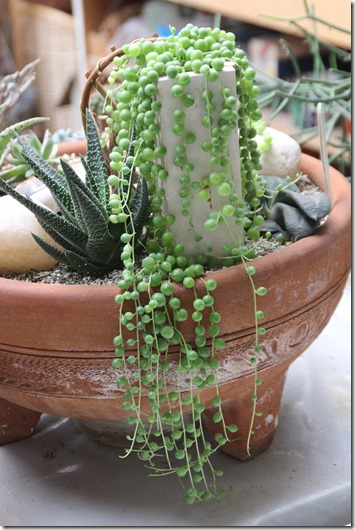
Recent Comments